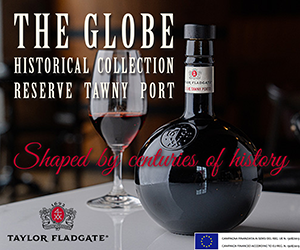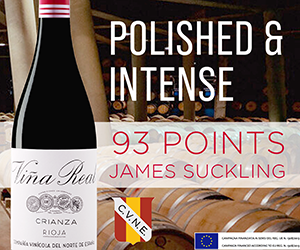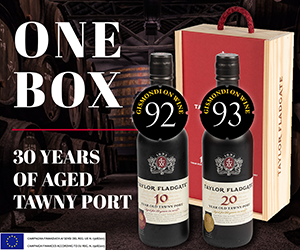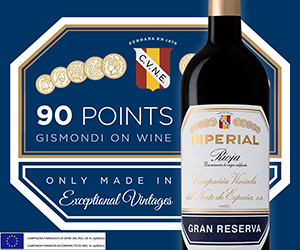This week's column is courtesy of a reader flummoxed by an Australian wine label.
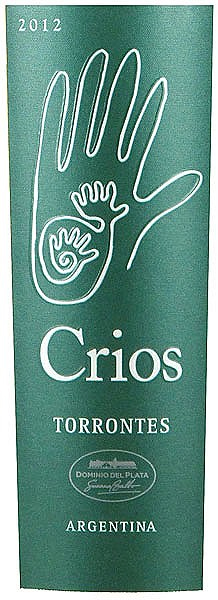
This week's column is courtesy of a
reader flummoxed by an Australian wine label. He writes. "On Saturday,
Aug. 3, I purchased a 2-litre carton of Stanley Wines of Australia blend,
Chenin, Semillon, Chardonnay. When I was putting the carton in the fridge I saw
a sticker on the back of the carton which reads, in part, 'Contains milk, eggs,
fish.' Is this some sort of nouvelle cuisine meal in a glass? Or am I just an
old wino and not part of the wine cognoscenti? I have never seen a note like
this before."
I'm tempted to say clog-nescenti, but in
a world full of allergic people listing the ingredients inside a bottle of wine
has been a hot topic for more than a decade and slowly but surely governments
are winning the battle. A lot goes into making a wine but it is more than just
grapes and romance. In the case of this Australian blend, and many from around
the world, it could be milk, fish or eggs.
All three can be found in additives that
are used to clarify or "fine" a wine. Almost all commercial wines
undergo fining, a process where a substance (fining agent) is added to the wine
that clings to any suspended particles, producing larger bits that precipitate,
or fall out of the wine. At this level soluble substances such as polymerized
tannins, colouring phenols and proteins are removed. This gentle scrubbing of
the wine prevents haziness and can reduce the amount of harsh tannins, making
it easier to drink at a young age.
Over the centuries many substances have
been used as fining agents although today there are two clear categories:
organic compounds and solid/mineral materials. The organic compounds are
normally animal-based and can include egg whites, casein derived from milk,
gelatin and isinglass obtained from the bladders of fish. Powdered minerals and
solid materials can also be used, with bentonite clay being one of the most
common given its ability to effectively absorb proteins and some bacteria.
"Milk, fish, eggs" are on the
Stanley label because likely one of them was used to clarify the juice and, in
Australia and New Zealand, the wine labelling laws require the use of fining
agents that may be an allergenic substance appear on the wine label.
Similar declarations are now in place in
Canada although Health Canada scientists have concluded that the use of
allergen-derived fining agents does not normally result in any appreciable
amount of protein from food allergens remaining in the wine. This is especially
true when the normal wine making practice of filtering a wine is employed.
Thus, in most cases of allergen-derived fining agent use, the new labelling
regulations for priority allergens would not be triggered.
As such, the use of food allergenderived fining agents in wine production, following good manufacturing practices, is not expected to produce wine that would pose a risk to egg-, milk-, or fish-allergic consumers. Therefore, in most cases of allergen-derived fining agent use, the new labelling regulations for priority allergens would not be triggered. Sorry, but you asked. On a much more positive note The Vancouver Sun and Thompson Okanagan Tourism have collaborated on a series of videos with a small number of B.C. wineries to tell their story visually. First up is a look at Culmina Winery opening Aug. 23 on the Okanagan Valley's famed Golden Mile.
Lingenfelder Riesling Bird Series 2012,
Pfalz, Germany
Price $19 | Score 88/100
UPC: 4017974070003
Fresh leesy, floral, plum nectarine
aromas. Rich-ish round, attack with fairly soft acidity, notes of wet slate
baked apple, honey, citrus flavours with the usual earth and bitterness on the
finish to balance the sugar. A perfect style for food. Thai noodle rolls with
spicy peanut sauce. Good value.
Invivio Sauvignon Blanc 2012,
Marlborough, South Island, New Zealand
Price $18 | Score 88/100
UPC: 009421901669003
Grapefruit, canned jalapeno, gooseberry,
nettle and green apple aromas. Fresh, crisp, juicy but slightly sweet palate.
Lemon grass, canned grapefruit, nettle, grassy, green apple flavours. Solid
entry level style with a sweeter edge. Best with spicy dishes.
Crios de Susana Balbo Torrontés 2012,
Calchaqui Valley, Salta, North, Argentina
Price $17 | Score 87/100
UPC 07798068480300
Always consistent, this Mendoza version
of torrontés relies more on power and depth of flavour than ultimate finesse.
That said it its spicy, floral, ginger nectarine skin aromas are sophisticated
for the price. The attack is full-flavoured, juicy, and just off-dry with plenty
of ginger, honey nectarine spice and citrus rind flavours.
Travaglini Gattinara 2008, Gattinara,
Piedmont, Italy
Price $37 | Score 90/100
UPC: 08033406220101
A blend of several vineyard sites this
nebbiolo is perhaps best described as a readier-to-drink Barolo. The nose
entices with pepper, tobacco, barnyard, floral, black cherry, licorice aromas.
The attack is soft and round with excellent acidity. The palate is generous
with black cherry jam, spice orange peel and smoky mineral, cumin flavours.
Excellent drinking now but will age gracefully for decades.
Bacalhoa Meia Pipa Private Selection Red
2009, Setúbal Peninsula, Portugal
Price $18 | Score 88/100
UPC: 56012371225
Fresh open peppery, savoury nose with
tobacco, olive, cassis, leather, balsamic and cherry aromas. Fresh, juicy,
round palate with light tannins and more peppery, plum, licorice, savoury
floral, cassis and tobacco flavours. Good fruit and intensity and best of all
it is ready to drink to drink.
Santa Cristina Chianti Superiore 2011,
Tuscany, Italy
Price $19 | Score 87/100
UPC: 08001935002789

 quicksearch
quicksearch


